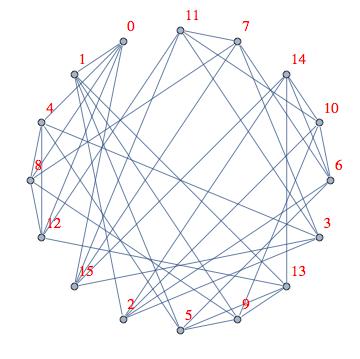I'm very slow to respond, but have finally found some time to put your complex into GAP and examine it.
Questions on $k$-decomposability on flag complexes
There were two questions about $k$-decomposability and flag complexes that seemed natural, and that I didn't know the answer to.
- Is every flag complex that is shellable also vertex-decomposable? (Your example says that the answer is "no"!)
- Is every flag complex that is shellable also 1-decomposable? I think this is still open.
The 1st question seemed interesting just because all of the main constructions (barycentric subdivision, CL-shellings) that give a shellable flag complex seemed to give a vertex-decomposable complex.
On the 2nd question: A complex $\Delta$ is 1-decomposable if we can find either a shedding vertices $v$ or shedding edges $e$ such that respectively ($\Delta \setminus v$ and $\operatorname{link}_\Delta v$) or ($\Delta \setminus e$ and $\operatorname{link}_\Delta e$) are both shellable. The conditions for a shedding edge are similar to those for a shedding vertex — see e.g. Provan and Billera [2] or Jonsson [1] or my own [3]. In a pure $d$-dimensional complex, it suffices that deleting the edge preserves pure $d$-dimensionality. There are also definitions of $k$-decomposability for higher $k$.
Since deleting either a vertex or an edge from $\Delta$ preserves the property of being flag, a positive answer to Question 2 would say that you can always shell flag complexes in the framework of $k$-decomposability, without needing to leave the world of flag complexes. (This would be some kind of partial dual result to the fact that every shellable pure $d$-dimensional complex is $d$-decomposable.)
Your complex
I found the details of how $\Delta = \Delta(C_{16}(1,4,8))$ failed to be vertex-decomposable somewhat surprising. Any vertex (and thus every vertex) is a shedding vertex, and of course links are shellable (and presumably vertex-decomposable). But deleting a vertex leaves a non-shellable complex.
Perhaps the easiest way to see the non-shellability of the deletion is to compute the $h$-vector, which (assuming I didn't make a mistake) is $[ 1, 11, 31, 18, -1 ]$. Since a Cohen-Macaulay complex must have a positive $h$-vector (and since $\Delta \setminus v$ is pure), this gives that $\Delta \setminus v$ is not shellable.
The same doesn't immediately give a proof that $\Delta = \Delta(C_{16}(1,4,8))$ isn't 1-decomposable. Indeed, deleting the edge $\{0,3\}$ from $\Delta$ (or equivalently adding the edge $\{0,3\}$ to $C_{16}(1,4,8)$ and taking the independence complex) preserves pure 3-dimensionality, and leaves a shellable complex. You can continue this process with edges $\{3,6\}$ and $\{6,9\}$, but once you've deleted these 3 edges, $\{9,12\}$ is not a shedding edge. I suspect that you can continue this process somehow to show the complex is 1-decomposable, but I haven't checked it and don't know for sure. (I hear you have an undergraduate working on this, and it might be an interesting project for her/him to check this carefully).
[1] Jakob Jonsson, Simplicial complexes of graphs, Lecture Notes in Mathematics, vol. 1928, Springer-Verlag, Berlin, 2008.
[2] J. Scott Provan and Louis J. Billera, Decompositions of simplicial complexes related to diameters of convex polyhedra, Math. Oper. Res. 5 (1980), no. 4, 576–594.
[3] Russ Woodroofe, Chordal and sequentially Cohen-Macaulay clutters, Electron. J. Combin. 18 (2011), no. 1, Paper 208, 20 pages, arXiv:0911.4697.


